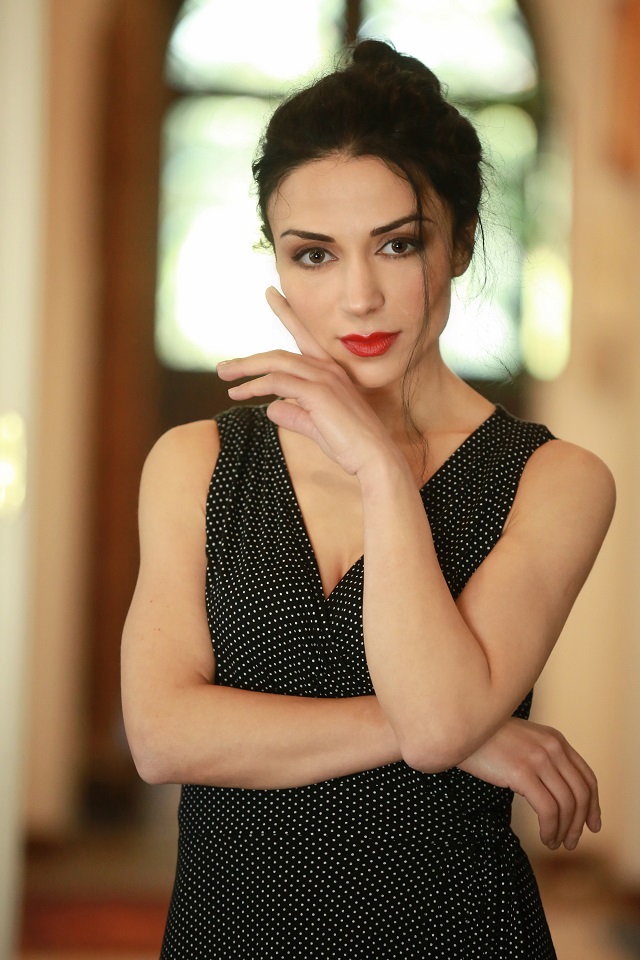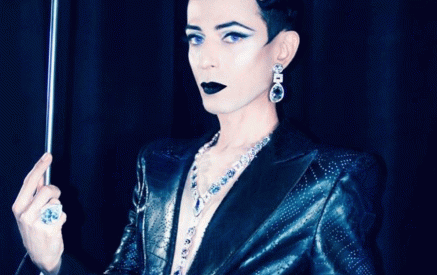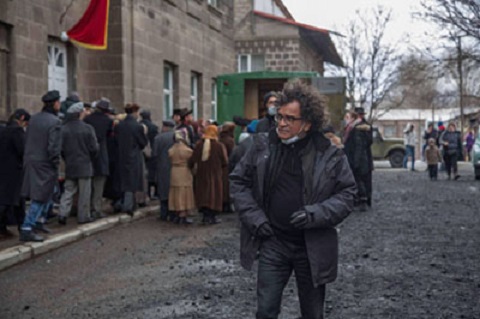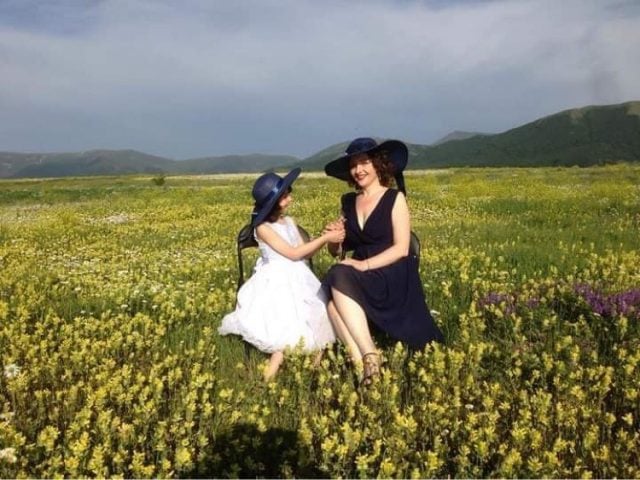YEREVAN / ROME — Marine Galstyan, actress, director, dancer, and choreographer from Yerevan, has been living and working in Italy for 17 years.
From 1999 to 2004 she studied at the Yerevan Institute of Theater and Cinema, where she acted as Nora in Ibsen’s “A Doll’s House,” Dorothea in De Filippo’s “Risk,” Mother in Mérimée’s “Mateo Falcone” (also she was the director of the play), Nina and Elena Andreevna in Chekhov’s “The Seagull” and “Uncle Vanya.”
Read also
In Italy she studied flamenco, Spanish classical dances and Argentine tango and later taught those dances in different cities of Italy (Florence, Grosetto, Pistoia, Rome). In Italian theater Marine acted in “Bernarda Alba’s House,” “Sold Apartment,” “Reality,” “Vico Renica’s Strange Night” and other plays. She made her film debut in 2004, in Armenia in Arthur Vardanyan’s film “I Love You, I Will Love You,” later in Italy in films like “The Whole World Is a Country,” “The Rest Is Through My Eyes,” “Giudecca’s Son,” “Miradas,” “Amat Malik’s Case,” etc.
Together with her husband, Sargis Galstyan, a graduate of the Yerevan Pedagogical Institute, dancer, director, laureate of various dance festivals, in 2008 she founded the “Aurum” dance duo, performing various styles of dances, “All the Colors of Tango” and other dance performances. In 2012, Sargis and Marine Galstyan founded “InControVerso” Italian-Armenian theater group, staging dramatic performances. The Galstyans have been living in Rome for eight years; they have one son, Edgar.
Dear Marine, I first heard about you from actress Sofik Sargsyan, who described you as “Maya Plisetskaya and Maria Callas in one person.” You preferred dancing and acting, but what happened to singing?
In fact, I have never been involved in singing. There have been performances in which I have sung, but I cannot say I possess the vocal art professionally. I thank my dear Sofik Sargsyan for such a description, which, however, is an exaggeration.
In general, you always remember your teachers with gratitude.
Yes, I remember my Yerevan lecturers with great happiness and warmth. I was one of the happy students who gave a lot, but also received a lot, being loved and appreciated by the teachers. It is so important to have the right teacher at the right age. Always in my soul, in my heart is the late Rafael Jrbashyan, who taught me not only my profession, but also the art of life. In every work of mine there is a trace left by him. Until now, I keep my notebook, where I have written down the interesting thoughts and quotes by Mr. Jrbashyan. I was always seeing Sofik Sargsyan in the corridors of the institute, who was encouraging us with her directness. Thanks to Sona Ghazanchyan, a lecturer in the fine arts history, I fell in love with Italy and Italian culture. She was presenting Italian art with such admiration that Italy became a great dream for all of us. Now, living in Rome, not far from St. Peter’s Basilica, passing through that square every day, I remember Sona Ghazanchyan’s lectures. Our lecturer of foreign theater history, Hasmik Khudaverdyan, from the moment she was entering the classroom, was inspiring us with her fascinating conversations about the theater of this or that country. The classes of the lecturer of stage speech, Elena Sergeyevna – Armenian actress Heghine Hovhannisyan, were also unforgettable. Everyone has left their marks in us. During my studies I felt like Alice in Wonderland…
And how did it happen that two dancers-actors with the surname Galstyan met in Italy, connecting the stage and personal lives?
Before our meeting, I had seen Sargis once on the Yerevan stage. Then, when I was already in Italy, once I was invited to Milan to perform an Armenian dance at the wedding of the daughter of one of our statesmen. Since I did not have any Armenian dance in my repertoire and I knew that Sargis works in Italy, I got in touch with him, a little scared, because I did not know him. He accepted my offer to perform together, which became fate. We met; Sargis performed three dances in two hours. After the rehearsal, when we sat down and looked at each other, we realized that our life would be together. Of course, we went a long way until we joined, but it was one of the most beautiful events of my life.
Usually, Italy, despite being a super-cultural country, does not attract artists from Armenia. What makes it special to be a foreign dancer and actor in Italy?
Actually for a non-local artist it is much more difficult and cruel in Italy. If we had known that in advance, we might have chosen another country. Everything is much more complicated and difficult here, which makes our victories much sweeter. It can be said that you almost bleed to achieve something here. Unlike France, the USA, Germany, not to mention Armenia or Russia, in Italy, unfortunately, dance is perceived differently, and the attitude towards dancers is different. Dance is one of the most complex arts, which, in addition to physical, also requires great, heavy mental and intellectual work. And the country where you put a lot of effort, you start to love a lot, so we do not regret that we did not have a career in the United States, as we had previously intended. If you are an accomplished actor in Rome, you will have an agent, constant invitations from theater and cinema. We have been in Rome for eight years and now we understand that we went through every difficulty and gained a lot of life experience.
I am interested in whether the Spaniards are not jealous of the fact that an Armenian performed and taught flamenco dances.
My flamenco teacher, the famous master of that genre, Spanish Pilar Carmona, both admired and sometimes tried to “destroy” me. That was because of her strong Spanish temperament, but I am very grateful to her for the skills I have acquired in performing Spanish dances. I have also performed Spanish dances in Spain, but being a self-critic, I have never considered myself a master of flamenco. I prefer the art of acting, I invest the rest of my skills on demand; they are already in my blood, which I can activate if necessary. In recent years, I have played leading roles in Italian theater, for example, in the play “If the World Shocks” I acted for an hour and a half as a blind woman, a survivor of a great tragedy, who speaks, sings and dances. It is a very difficult job, but there were praiseworthy articles about my performance. My last big role was Ophelia in the staging of “Hamlet,” the performance of which, however, was postponed for well-known reasons.
Our audience watched your “No Exit” dance performance first in 2004, with the participation of our ballet dancers Maria Divanyan, David and Ara Harutyunyans, then another dance-dramatic version of it in 2013. How is to present this famous play by Jean-Paul Sartre through dance?
I loved that play thanks to the lecturer I remembered, Hasmik Khudaverdyan. When she presented “No Exit” in a very impressive way, I immediately said I want to stage it. And I do not know why I saw the whole story in the language of tango. That hellish state, the relationship between these people, it was possible to give a stage solution through tango steps, which, I think, was relevant.
Tell us about your involvement in cinema.
Both Sargis and I, from time to time acted on TV and cinema, being often chosen together. I have participated more in international film projects and independent films. Sargis has recently played episodic roles in two TV series. By the way, I am the main actress of the Italian part of the film “In the Same Garden” about the Armenian-Turkish conflict. The film is a collection of 20-minute films shot by six important directors, showing how deep the wound caused by that conflict is. The film has already started to be shown at international film festivals.
Tell us about the dramatic performance “The Great Pain” staged by Sargis on the occasion of the 100th anniversary of the Armenian Genocide.
It is the first Italian play written by Sargis, where there is inexplicable depth and scale, confident thought. It starts with the gathering of the Young Turks, and the whole performance takes place behind a thin net, then the shots with 3D technology appear on the screen, the characters are in historical costumes, we see how Soghomon Tehlirian finds Talaat, etc… We used the music of Avet Terteryan and Younis Bashir, the final music of Henri Verneul’s film, “Mayrig,” recordings of Lusine Zakaryan’s singing and duduk melodies. All the actors were well-known Italians, except of me and Arsen Khachatryan from Yerevan, who is now an actor in Florence. We performed “The Great Pain” only three times, I hope we will present it again. After that, Sargis wrote two more Italian plays: the grotesque “Blablateca” and the absurd “Poll Dance,” a surreal comedy. Writing comedy in Italy takes a lot of courage, and it was gratifying that the audience did not shut their mouths from beginning to end. “Poll Dance” was considered the best performance of the Roman theatrical season and was included in the play list of Cometa, one of the most important theaters in Rome, but because of the Covid epidemic its performances were postponed…
In general, this epidemic has had a negative impact on those who perform on stage. What have you and Sargis been doing during these difficult months?
Sargis busied himself in writing his fourth play, and I went into staging new performances, the drama “Angel Child” and the comedy “Anonymous Motives.” Well, I highly hope we will present them to audiences soon.



























































